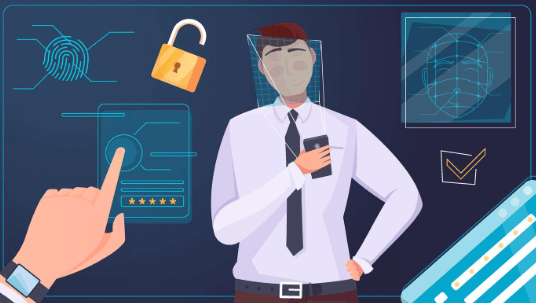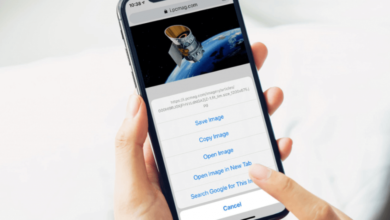An Inclusive Guide to Acknowledge Various Identity Proofing Solutions

It is not enough for businesses to utilize physical user inspection methods. Innovative strategies are now assets of fraudsters, which they use for synthetic ID fraud. They utilize machine learning technology and synthesize fake IDs to use in various illicit activities. Digital identity-proofing solutions are primarily needed for organizational security in case of prevailing fraud attacks. Companies are required to update their security measures for higher success and enhanced working processes.
Authenticity identification is a big challenge due to rising innovative criminal strategies. There is a growing need for advanced solutions for forgery detection. The document verification process is digital now and involves artificial intelligence and machine learning algorithms. Companies eliminate the risk of forgeries and verify every user ID document through sharp detectors. Imposters generate fake ID documents such as passports, licenses, and identity cards, which they use in bypassing securities.
Digital Process of Document Validation
Authenticity identification is a big challenge due to rising innovative criminal strategies. There is a growing need for advanced solutions for forgery detection. The document verification process is digital now and involves artificial intelligence and machine learning algorithms. Companies eliminate the risk of forgeries and verify every user ID document through sharp detectors. Imposters generate fake ID documents such as passports, licenses, and identity cards, which they use in bypassing securities.
A document verification process is used to confirm the authenticity of individual IDs. It can be used to verify any kind of paper, such as bank statements, employment records, or any other ID proof, such as an identity card and passport. It allows companies to verify user-provided data and works as an identity-proofing solution to enhance the verification process.
How Does the Digital Process Work for Document Validation?
Companies use a document verification system to verify an individual’s claimed identity, which they provide in the form of a name, DOBs, and CNIC number. The digital document verification process involves the usage of an optical character recognition service. It verifies every character through automated checks and helps companies in identity proofing. These checks validate various points such as font, ink color, stamps, foils, and watermarks to identify authenticity. Various businesses and companies incorporate an online document verification process. It serves as a component of their comprehensive identity-proofing solution and helps in other verification methods. It allows digital record keeping which is utilized for autocross checks and watchlist identification.
Biometric Identity Verification Through Face Recognition
Automatic facial recognition service is the best approach to biometric security. It helps businesses in verifying potential users in real-time through face prints. Automatics canners verify facial nodes and capture individual images to verify them through deep learning technology. It enhances firms’ trustworthiness by ensuring higher security from synthetic identity fraud. Additionally, biometric security systems are more accurate than passwords and other methods because of their less hackable nature.
Traditional identity proofing methods, such as manual document checking and physical inspection of ID proofs, are less reliable. It is not enough to use manual ID proofing methods in this age where synthetic ID fraud is most common. Digital and innovative identity verification processes allow firms to experience a precise and automated solution for real-time identity proofing. Knowledge base questions and password-based methods are prone to hacking and cannot secure companies from prevailing fraud attacks.
Personal Identifying Information (PII)
Businesses collect personally identifiable information from their users. It involves various personal details such as address, social security number, name of an individual, and contact details, which involve email, telephone number, or landline. This information is primarily required to authenticate users for higher security from synthetic identity fraud. It serves as the best identity-proofing data. However, digital document verification is necessary for accessing users’ accurate personal identification information.
For identity proofing, a company can request personal information that only the individual knows. It may include a Social Security Number (SSN). However, the PII method is not reliable, and it has some drawbacks. Hackers can use stolen ID details to get access to organizations that use PII methods for ID validation. Ever-growing fraudster activities cannot be identified with traditional verification methods. It needs modern solutions such as Know Your Customer compliance and a biometrics security system.
Out-of-Band Authentication (OOBA)
Out-of-band authentication (OOBA) is another verification method that involves various different communication channels to authenticate an individual through signing in and online transaction details. The OOBA process mainly involves two factor authentication (2FA) by verifying activity through on time passwords (OTPs). However, modern solutions are more accurate in terms of identity-proofing and serve businesses with a seamless working landscape.
Final Words
Digital identity proofing solutions are the primary need of every sector to overcome various complexities. It is mandatory for financial sectors and businesses to utilize the online ID authentication process to overcome synthetic identity fraud. Biometric identity verification involves deep learning algorithms and overcoming spoofing and deep fakes.
Entity through an independent channel, reducing the risk of fake identities or impersonation.Identity proofing methods are various in nature, however , companies must use up-to-date security protocols for their enhanced security and seamless working.




